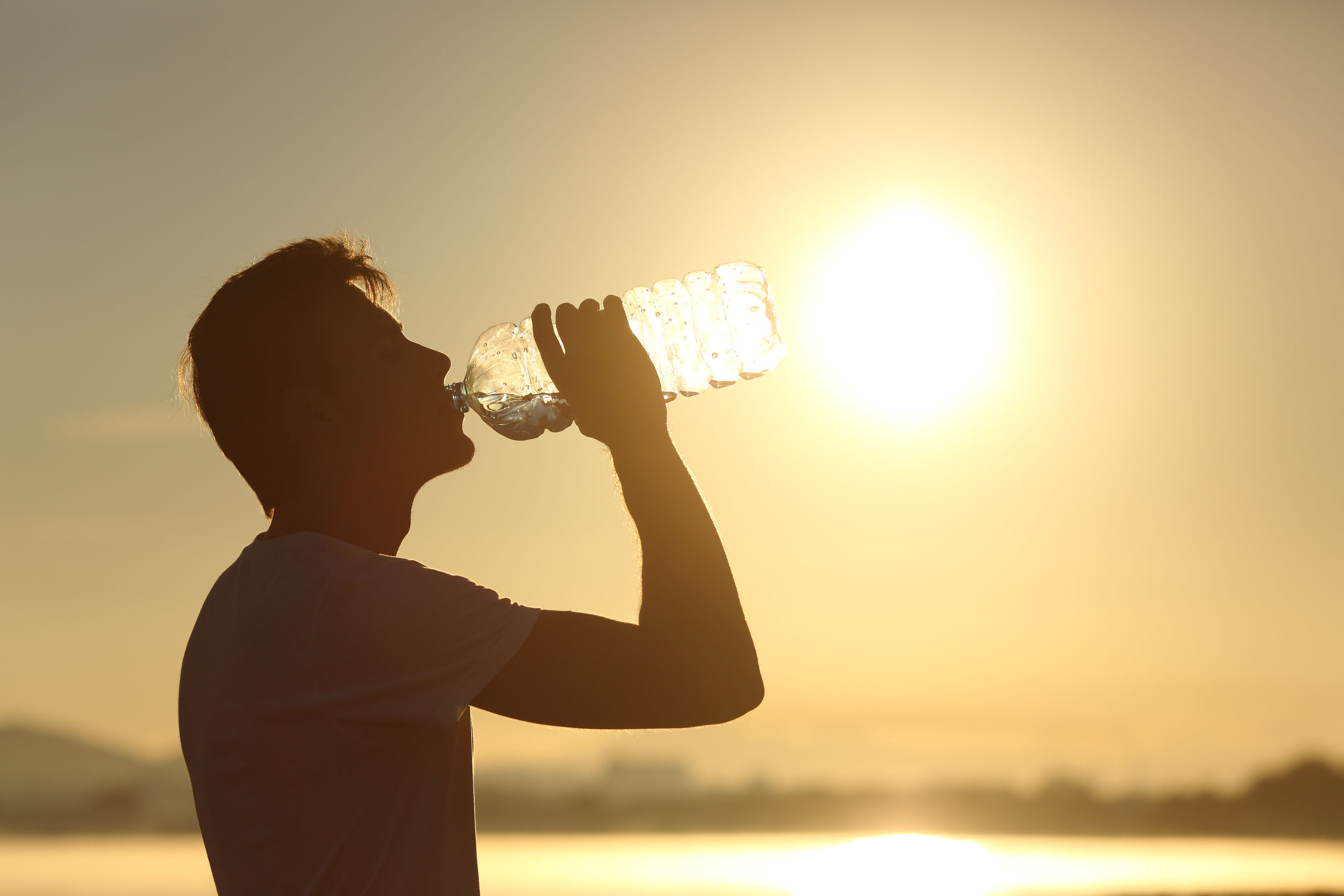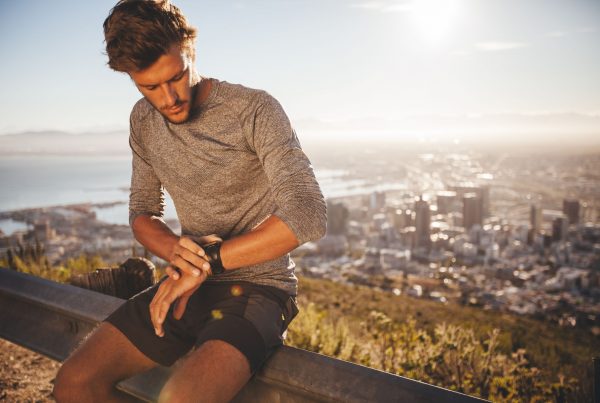”Alaska, do you drink enough water? It is important to stay hydrated! This week's article dispels some common myths around hydration practices. We hope you learn something new and you find this encouraging to drink more water!
Reading time: 7 Minutes
MWi Hack:
- Read up on the latest hydration research and debunk some old theories
- Learn why it is important to know your body and planned activity and select a hydration strategy to match
MWi Summary:
- Best practices around hydration have changed.
- Recent studies suggest that it is now more important to drink according to your thirst versus ahead of your thirst.
- Another old guideline that has changed is equating sports drinks and water. Sports drinks are better equipped to hydrate athletes during intense exercise. However, it is most important to remember to find the hydration practice that works best for you.
- Practice makes perfect.
The New Rules of Hydration
Old: Drink ahead of your thirst.
New: Drink according to your thirst.
For years, sports nutrition experts advised athletes to drink “ahead of thirst,” that is, to drink before getting thirsty and more frequently than what thirst dictated during exercise. Experts warned that by the time you feel thirsty, you’ve already become dehydrated. However, recent studies show that being in this state of slight dehydration has no negative impact on performance or health.
For example, in a study from the Sports Science Institute of South Africa, runners did three two-hour workouts while drinking a sports drink at three different rates: by thirst (roughly 13 oz. per hour), at a moderate rate (about four oz. every 15 to 20 minutes), and at a high rate (about 10 oz. every 15 to 20 minutes).
The study found no significant differences in core body temperature (rising body temperature hastens dehydration) or finishing times among the three trials. However, during the high-rate trial two of the eight runners suffered severe stomach distress and couldn’t finish the workout, suggesting that drinking too much too often can cause problems.
“The idea that thirst comes too late is a marketing ploy of the sports-drink industry,” says Tim Noakes, M.D., a professor of sport and exercise science at the University of Cape Town, South Africa. While thirst is not a perfect indicator of hydration status, it does appear to be a good indicator of the optimal drinking rate during exercise, according to Noakes. “The answer is just to drink as your thirst dictates.”
Old: Aim to completely prevent dehydration.
New: Aim to slow dehydration.
You’ve probably been told to drink enough fluid during exercise to completely make up for what you lose through sweat. In other words, the goal is to weigh the same before and after your workout. But the latest research has revealed three problems with this advice.
First, when athletes drink according to thirst, they usually replace only 60 to 70 percent of the fluid they lose, but studies have shown that this state of slight dehydration does not harm performance or health.
Second, the recommendation to drink enough fluid to prevent weight-loss is based on the false assumption that all the weight lost is from body fluid evaporating as sweat. However, recent studies show that a significant amount (as much as 60 percent) is actually due to the loss of water stored with fat and carbohydrate molecules, which is released from the muscles when these stores are converted to energy. Although it contributes to sweat and weight loss during exercise, this kind of fluid loss has no dehydrating effect because it doesn’t reduce blood volume.
Third, the problem with drinking to completely prevent dehydration is that it tends to dilute the concentration of sodium and other electrolytes in the blood, especially during prolonged exercise of more than two hours. Electrolytes are dissolved minerals that regulate your body’s fluids, helping create the electrical impulses essential to physical activity. When you sweat, you release more sodium than any other electrolyte.
Since even the most electrolyte-packed sports drink has a lower sodium concentration than sweat, when you replace sweat with a sports drink you essentially water down your blood. In extreme cases, blood sodium dilution leads to hyponatremia, a potentially fatal condition where fluid balance is thrown off to the point where cells literally become waterlogged, causing the brain to swell.
Therefore, instead of drinking to completely replace the fluid you sweat out during exercise, aim for keeping thirst at bay. Respond to your thirst right away with small amounts of sports drink, but don’t allow your thirst to build to the point that you’re forced to guzzle down a full bottle at one time. Taking a few sips about every 10 to 12 minutes will help you stay hydrated and avoid stomach upset.
Old: Use either a sports drink or water for hydration.
New: Use a sports drink instead of water.
Prior to 2003, USA Track & Field’s hydration guidelines for runners suggested that water and sports drinks were equally good choices for hydration during intense physical activity. But, based on new research concerning the risks of blood sodium dilution, the USATF revised its hydration guidelines stating, “A sports drink with sodium and other electrolytes is preferred.” Athletes in other sports are now following these guidelines as well.
In short, sports drinks simply hydrate better than water does. Your body absorbs fluids through the gut and into the bloodstream faster when their osmolality, the concentration of dissolved particles in a fluid, more closely matches the osmolality of body fluids such as blood.
Because a sports drink contains dissolved minerals (key electrolytes such as sodium, calcium, magnesium, potassium, and phosphate) and carbohydrates, it’s absorbed into the bloodstream more quickly than water, which has fewer or no dissolved particles.
Moreover, electrolytes and other nutrients play important roles in regulating fluid in the body. They help determine how much fluid enters muscle fibers and cells, and how much remains in the blood. That’s why sports drinks do a better job than water in helping the body maintain an optimal fluid balance.
Water is fine for short (less than an hour) workouts of easy to moderate intensity in which you don’t sweat a lot. But in any workout where sweat losses are substantial, and especially in warm weather, use a sports drink.
Old: Protein exacerbates dehydration.
New: Protein enhances hydration.
The first generation of sports drinks contained no protein because it was believed to slow the absorption of fluid into the bloodstream from the stomach and intestine. But new evidence suggests that a small amount of protein actually enhances both fluid absorption and retention in athletes.
A recent study from the Universidad Catolica San Antonio in Spain found that a carb-protein sports drink actually entered the bloodstream significantly faster than a carb-only sports drink when used by cyclists pedaling at a moderately high-intensity level.
In another study from St. Cloud State University in Minnesota, athletes retained a carb-protein sports drink 15 percent better than a carb-only drink, meaning 15 percent less of it was wasted in the bladder. “A small amount of protein in a sports drink may enhance absorption and retention by increasing osmolality,” says Robert Portman, Ph.D., and CEO of PacificHealth Labs, manufacturer of the protein-powered Accelerade sports drink.
“Small” is the operative word. Packing your water bottle with protein powder is not the secret to peak performance. Too much protein slows absorption and hampers hydration. Research shows that sports drinks containing only about five grams of protein per 12 oz. not only re-hydrate better but also reduce muscle damage and increase endurance compared to drinks without protein. Recently, the International Society of Sports Nutrition recommended the use of protein-added sports drinks by both competitive athletes and daily exercisers.
Old: Caffeine exacerbates dehydration.
New: Caffeine does not affect dehydration.
Caffeine is a known diuretic, which means it increases urine production and has a dehydrating effect. But research has also shown that during exercise, the body is able to circumvent the diuretic influence of caffeine, which can boost athletic performance by stimulating the nervous system and reducing perceived effort.
A new study conducted at the University of Birmingham in England found that caffeine increases the rate at which supplemental carbohydrates (those consumed during the workout as opposed to those already stored in the body) are burned during exercise. In the study, cyclists received either a 6 percent glucose solution or a six percent glucose solution plus caffeine during a two-hour indoor cycling test.
Researchers found that the rate at which the supplemental carbs were burned was 26 percent higher in the cyclists receiving carbs with caffeine, concluding that the caffeine may have increased the rate of glucose absorption in the intestine. By providing fuel to working muscles at an accelerated rate, caffeine helps athletes work harder for longer periods of time.
But don’t overuse it. Reserve caffeine consumption for races and occasional high-intensity workouts. “The best use of caffeine as an ergogenic aid [energy booster] is prior to competition,” says Jose Antonio, Ph.D, author of Supplements for Endurance Athletes. “The beneficial effects of caffeine on athletic performance are reduced with habituation, so the more often you rely on it, the less it will do for you.”
Although no major sports drink brand contains caffeine, some flavors of sports gels do, such as Gu Chocolate Outrage, Strawberry Clif Shot, and Chocolate Accel Gel.
The Cardinal Rule
One principle of proper hydration hasn’t changed: Practice makes perfect. Experiment with various hydration strategies to learn what works best for you. Try different sports drinks in varying amounts, and hydrate at different times during your workout to discover the optimal mix.
MWi would like to thank Matt Fitzgerald for sharing his expert insights with our community. Read the original article:
https://www.active.com/health/articles/the-new-rules-of-hydration?page=3






